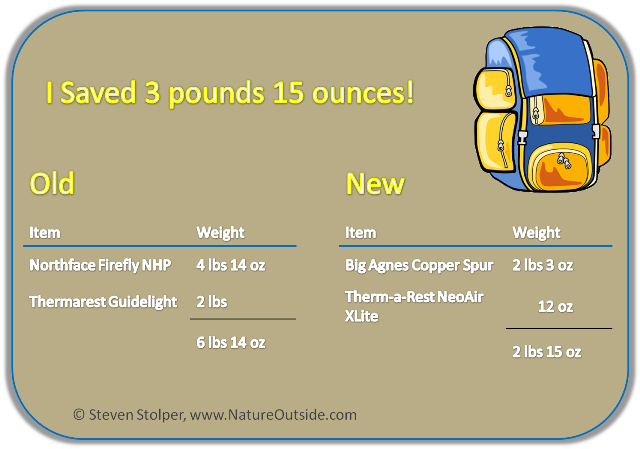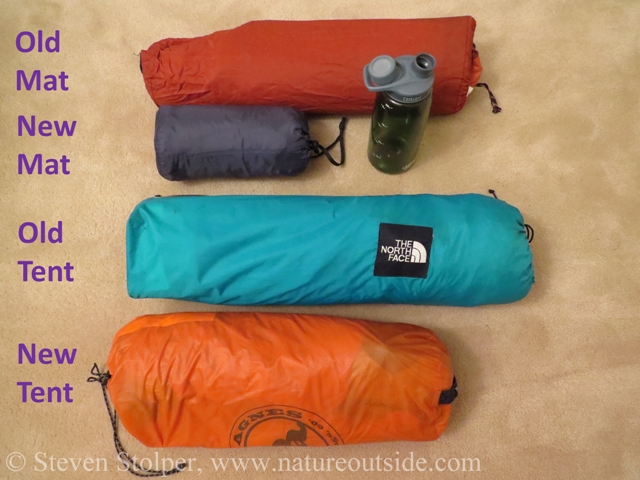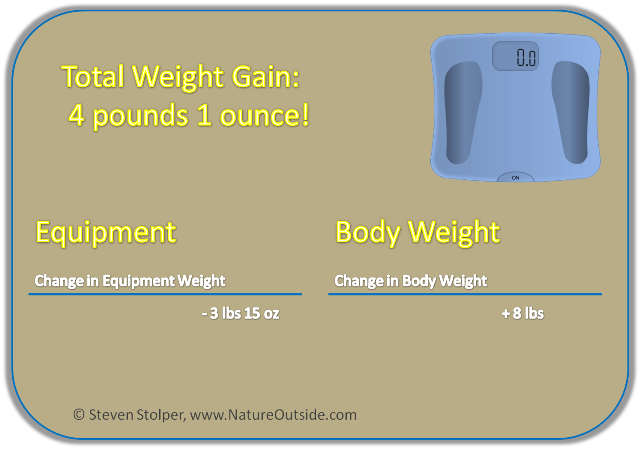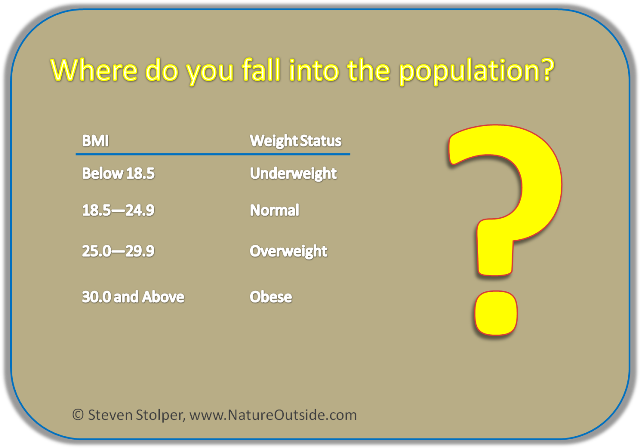
Marcus Jeffrey, flickr.com (CC BY-SA 2.0)
It’s OK to laugh.
Go ahead and laugh at me. I don’t mind.
In fact, I invite you to laugh at my foolishness!
I still shake my head at what I did this year. And I’m not too proud to share it. I hope it saves you from making the same mistake.
Gear with Character
I buy high quality gear and take care of it. So it lasts me many years. I justify (to myself) spending more money for quality equipment because I know I will use it for years to come.
So I get many years of enjoyment from my equipment. But the drawback is that I miss out on technological advancement. And in recent years technology has taken off! Manufacturers are applying materials science and computer-aided design to outdoor equipment. As a result we have lighter, warmer, more water repellent and more efficient gear.
But I remain defiant! If there’s nothing wrong with my old gear why should I buy new? When it comes to outdoor equipment, I took the exit ramp off the Consumer Expressway long ago.
My stuff has character. There are gloves I purchased in Tasmania when I forgot it was winter in the Southern Hemisphere. The shirts I refused to trade for a stone sculpture in Zimbabwe, and the tent I lived in for 12 days while tracking Orca by sea kayak.
Yes my gear is weathered. Yes it’s heavier than the new stuff. But it’s as comfortable as a well worn pair of hiking boots (literally!).
New Shiny Gear
But age and gravity catch up with us all. When leading trips for urban youth, I often exulted in my ability to carry a 42 lbs pack (32% of my body weight) over difficult terrain. Now I look back and think, “What a dork! Carry a lighter pack and enjoy yourself!”
So in the past year I did something I have never done before. I upgraded my gear before it wore out. I bought the new stuff on sale, used coupons, and paid well below MSRP.
I went for the low hanging fruit. I invested in a new, lighter, one-person tent (Big Agnes Copper Spur). I also sprung for a new, lighter, more compact sleeping mat (Therm-a-Rest NeoAir XLite).
Let’s take a look at my haul:

By changing my equipment, I saved pack weight.
In addition to the weight savings, my new gear is stores more compactly.

My new gear is lighter and more compact. Which would you rather carry? Standard one-liter water bottle for scale.
Now the Kicker
Besides my new outdoor gear, there was another big change in my life. I landed a new job! Terrific news, I will be able to afford more outdoor adventures!
But here’s the thing: I now work 50-80 hours per week sitting in front of a computer. The company serves us meals so we don’t have to leave our desks. So I sit. And sit. And sit.
We routinely work weekends. So I don’t have the time to hike that I once did.
The result: I gained 8 lbs this year! My body weight increased by 6%! My percentage body fat increased almost 2%!
So after spending hundreds of dollars to reduce pack weight by 3.9 lbs, I gained 8 lbs of body fat!
Watch Your Weight!

After spending hundreds to reduce my equipment weight, I now carry more!
I can’t believe it! When I look down I see stomach instead of the top of my boot laces. And carrying body fat is not the same as carrying extra equipment. I carry the weight all the time! Uphills seem steeper. And my “trick knee” has risen from the grave.
Please don’t let this happen to you! It is much easier to prevent weight gain than it is to lose unwanted pounds. I am going to spend the coming year trying to get back into shape and discard my unwanted baggage.
One way to monitor your weight to see how you compare to the rest of the population. The Body Mass Index (BMI) is a person’s weight in kilograms divided by the square of his height in meters. A high BMI can indicate high body fatness.
I should mention that BMI has its shortcomings. It fails to consider important factors like age, gender, body mass composition (muscle vs. fat), or body mass distribution (body shape). This means that people can be placed incorrectly on the BMI scale, depending on their actual body type. For example, the scale does not work well for athletes.
Here is a link to the CDC’s BMI Calculator.

For more information on preventing weight gain, see this page on the CDC’s website.
I’m Laughing on the Inside
I still can’t believe this happened to me. It is the result of inattention and inactivity. I invested in new lightweight equipment while neglecting my own body weight. So learn what this experience has taught me:
Take care of your body! It’s the best piece of equipment you will ever own.
More Articles on NatureOutside
Wilderness First Aid and the Duty of Care to Yourself
10 Traditional Skills You Should Learn
How to Choose a Wilderness Survival Class
For fun facts and useful tips, join the free Bushcraft Newsletter.



so easy to put on weight and so much harder to lose it. good advice! I’m trying to take better care of my equipment 🙂
Luckily for us, Polly, hiking in nature is wonderful low-impact exercise. 🙂